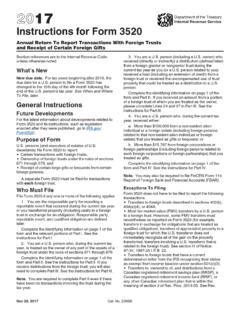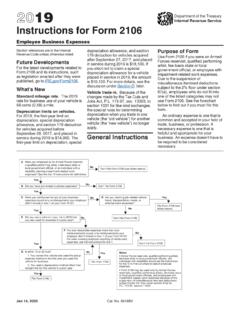Transcription of Clinitek Point of Care Urinalysis Testing
1 Clinitek Point OF care Urinalysis Testing PROC #: Philadelphia / Langhorne, PA Dept. of Pathology & Laboratory Medicine Page 1 of 12 Clinitek Point of care Urinalysis rev. 06/09 Departmental Manual Key Contact: Point of care Coordinator PROCEDURE # Clinitek Point OF care Urinalysis Testing PREPARED BY DATE ADOPTED SUPERSEDES PROCEDURE # Janet Swaim 6/2009 N/A REVIEW DATE REVISION DATE SIGNATURE DISTRIBUTED TO # COPIES DISTRIBUTED TO # COPIES Torresdale Campus 2 Frankford Campus 1 Bucks Campus 1 Torresdale Campus Lab 1 Clinitek Point OF care Urinalysis Testing PROC #: Philadelphia / Langhorne, PA Dept.
2 Of Pathology & Laboratory Medicine Page 2 of 12 Clinitek Point of care Urinalysis rev. 06/09 Departmental Manual Key Contact: Point of care Coordinator OPERATORS: Registered Nurses and emergency room technicians who are properly trained on the Clinitek Status Testing system perform the procedure. All personnel must demonstrate their proficiency in performing Quality Control and patient Testing activity in the annual skills lab competency or peer review. New employees will have their competency assessed six months after initial competency and annually thereafter. EQUIPMENT AND SUPPLIES: Equipment: 1.
3 Siemens Reagent Strips 2. Clinitek Status Analyzer 3. Specimen collection container 4. Paper towels Principle of the Test: Siemens Reagent Strips for Urinalysis are read instrumentally by the Clinitek Status Analyzer. Siemens Reagent Strips provide tests for: 1. Glucose 2. Bilirubin 3. Ketone (acetoacetic acid) 4. Specific gravity 5. Blood 6. pH 7. Protein 8. Urobilinogen 9. Nitrite 10. Leukocytes in urine Chemical Principles of the Siemens Reagent Strips TEST NAME CHEMICAL PRINCIPLE Glucose Glucose oxidase catalyzes the formation of gluconic acid and hydrogen peroxide from the oxidation of glucose.
4 Peroxidase catalyzes the reaction of hydrogen peroxide with a potassium iodide chromogen to oxidize the chromogen to colors ranging from green to brown. Bilirubin Bilirubin couples with diazotized dichloraniline in a strongly acid medium. Colors range through various shades of tan. Ketone Acetoacetic acid reacts with nitroprusside. Colors range from buff-pink for a negative reading, to maroon for a positive reading. Specific Gravity pKa changes occur for certain pretreated polyelectrolytes in relation to ionic concentration. In the presence of an indicator, colors range from deep blue-green in urine of low ionic concentration through green and yellow-green in urines of increasing ionic concentration.
5 Blood Hemoglobin catalyzes the reaction of diisopropylbenzene dihydroperoxide and 3,3 , 5, Clinitek Point OF care Urinalysis Testing PROC #: Philadelphia / Langhorne, PA Dept. of Pathology & Laboratory Medicine Page 3 of 12 Clinitek Point of care Urinalysis rev. 06/09 Departmental Manual Key Contact: Point of care Coordinator 5 -tetramethylbenzidine. Colors range from orange through green; very high levels of blood may cause the color development to continue to blue. pH The double indicator principle gives a broad range of colors covering the entire urinary pH range.
6 Colors range from orange through yellow and green to blue. Protein At a constant pH, the development of any green color is due to the presence of protein (protein error-of-indicators principle). Colors range from yellow for Negative through yellow-green and green to green-blue for Positive reactions. Urobilinogen In a modified Ehrlich reaction, p-diethylaminobenzaldehyde in conjunction with a color enhancer reacts with urobilinogen in a strongly acid medium to produce a pink-red Nitrate (derived from the diet) is converted to nitrite by the action of Gram negative bacteria in the urine.
7 At the acid pH of the reagent area, nitrite in the urine reacts with p-arsanilic acid to form a diazonium compound. This diazonium compound couples with 1,2,3,4-tetrahydrobenzo(h)quinolin-3-ol to produce a pink color. Leukocytes Esterases in granulocytic leukocytes catalyze the hydrolysis of the derivatized pyrrole amino acid ester to liberate 3-hydroxy-5-phenyl pyrrole. This pyrrole then reacts with a diazonium salt to produce a purple product. Clinical Application and Usefulness: Siemens Reagent Strips are for in vitro diagnostic use. Urinalysis can provide the physician with important information regarding the status of a patient s health.
8 Test results may provide information regarding the status of: 1. Carbohydrate metabolism 2. Kidney function and liver function 3. Acid-base balance 4. Urinary tract infection. NOTE: As with all laboratory tests, definitive diagnostic or therapeutic decisions should not be based on any single result or method. Specimen Collection Storage: Patient Identification/Preparation: Urine Point of care Urinalysis Testing will be performed only when ordered by a physician. Patient is identified using their identification band to verify name and date of birth. A label with the patient name, date of birth and medical record is affixed to the urine container.
9 Urine is the only acceptable sample type for this assay. Collect urine into a clean, dry container. Specimens collected at any time of day may be used. Biohazard: Handle all specimens, as if capable of transmitting infectious diseases. Wear appropriate facial protection, gloves and protective clothing. 1. Obtain a fresh, urine specimen. Specimens should be at room temperature for less than two hours before Testing . 2. Collect the urine in a clean, dry, covered container. Clinitek Point OF care Urinalysis Testing PROC #: Philadelphia / Langhorne, PA Dept.
10 Of Pathology & Laboratory Medicine Page 4 of 12 Clinitek Point of care Urinalysis rev. 06/09 Departmental Manual Key Contact: Point of care Coordinator 3. The urine specimen should be well mixed and uncentrifuged. If the urine depth in the container is less than 3 inches ( cm), pour the specimen into a narrow tube. 4. If a urine culture is required, a separate (new) specimen must be collected. 5. If Testing is delayed (>2 hour after collection), specimen should be refrigerated for preservation. Allow urine specimen to return to room temperature before Testing .



















